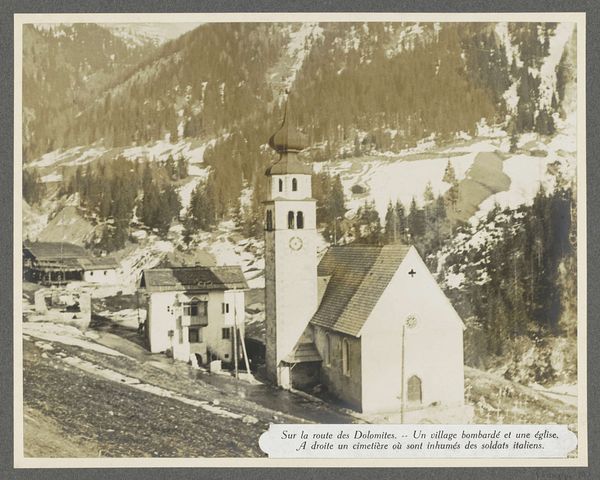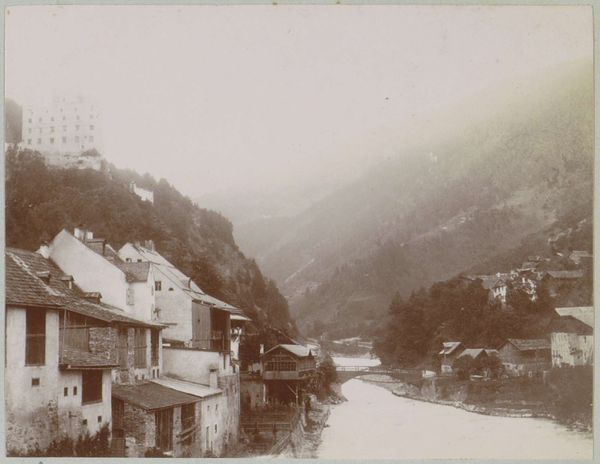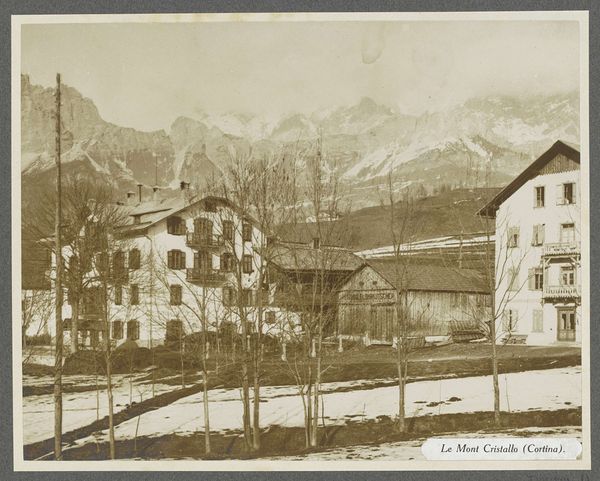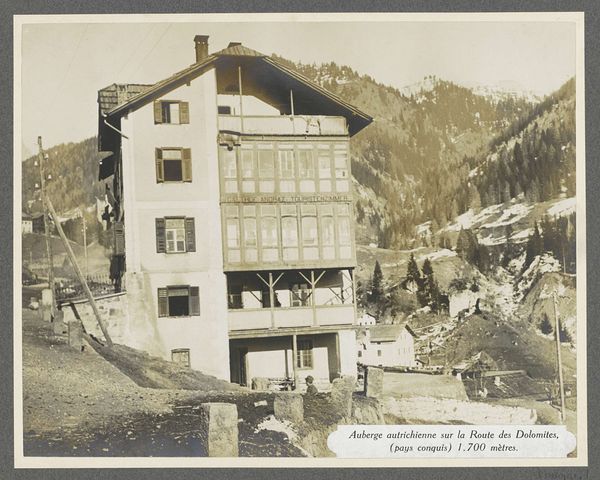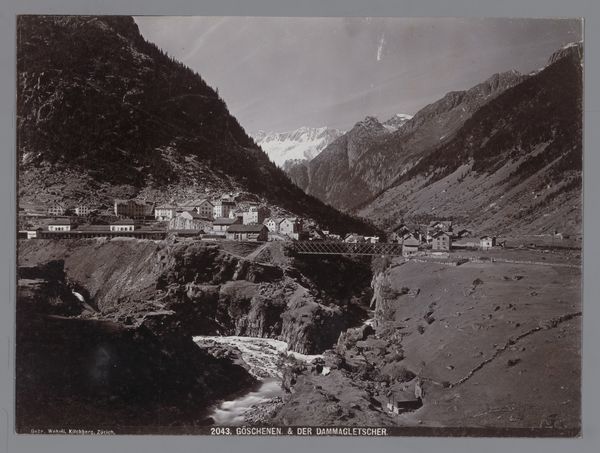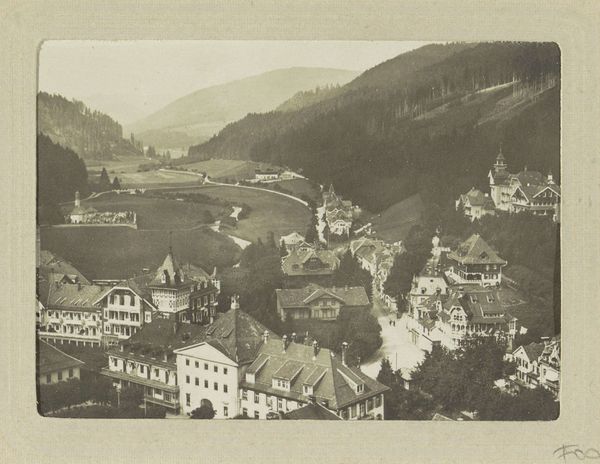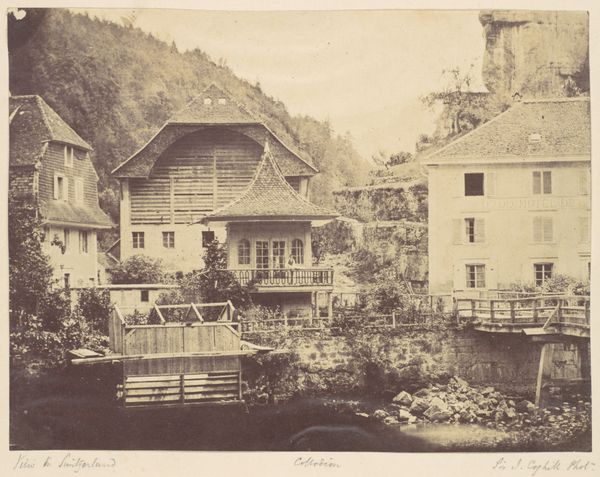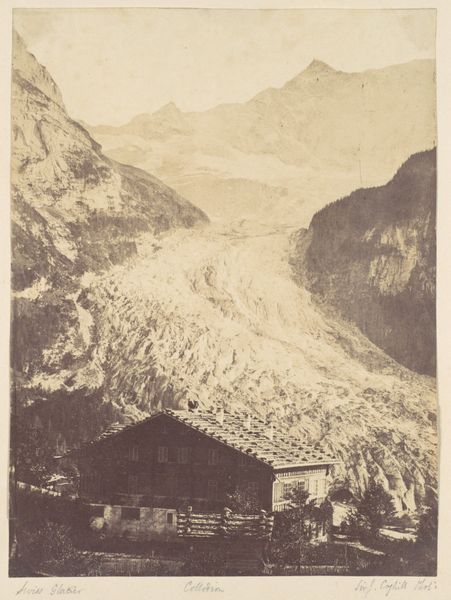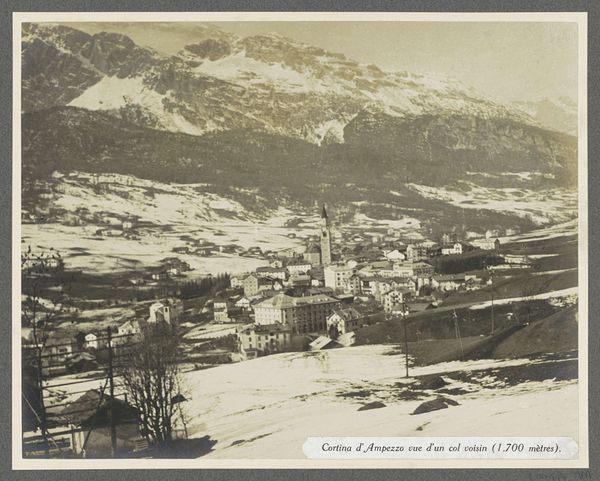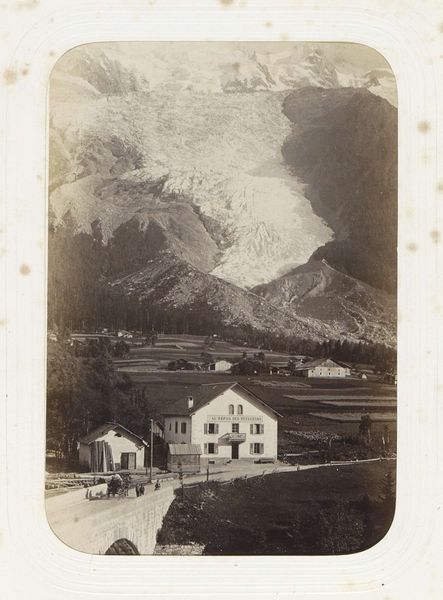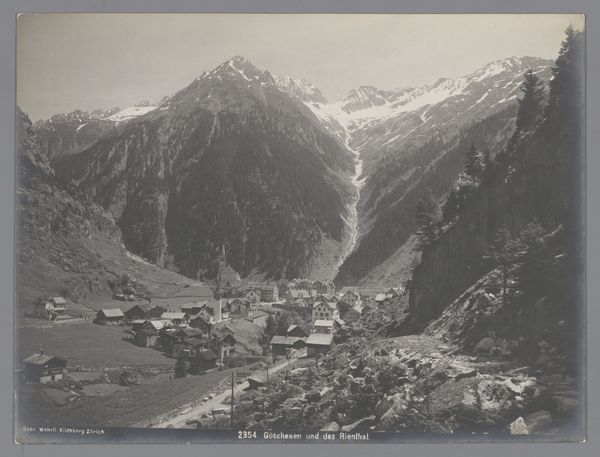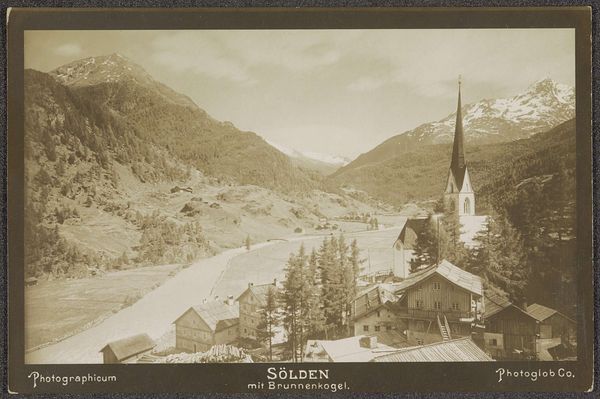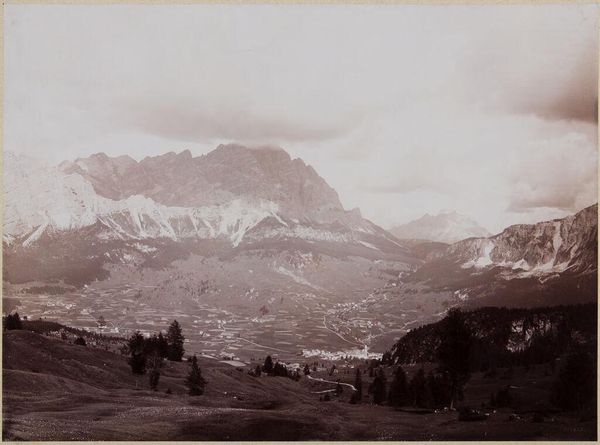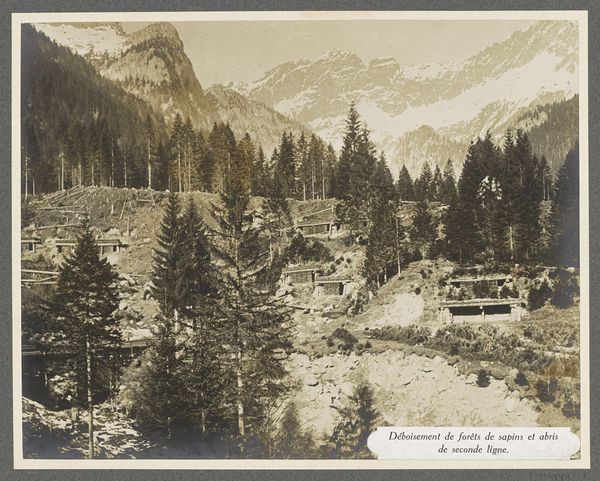
print, photography, gelatin-silver-print
# print
#
sculpture
#
landscape
#
street-photography
#
photography
#
desaturated colour
#
gelatin-silver-print
#
realism
Dimensions: height 220 mm, width 280 mm
Copyright: Rijks Museum: Open Domain
Curator: Henri de Rothschild's "Gebombardeerd dorp in de Dolomieten," taken in 1916, is a gelatin-silver print depicting a war-ravaged village. What strikes you most when you look at it? Editor: It's the stillness. The stark, almost monochromatic palette gives it a very somber feel. It’s as though the landscape itself is holding its breath. And then you notice the destroyed houses. It creates a palpable tension between nature's grandeur and humanity's capacity for destruction. Curator: Indeed. The gelatin-silver process itself is quite interesting here. It allows for such sharp detail, doesn’t it? You can almost feel the rough texture of the damaged roofs, the broken walls... Consider the labor involved, the darkroom techniques, the transport of materials during wartime. Editor: Absolutely, and I am struck by the rooftops in particular. They are at once domestic icons, places of safety and rest, now violated, open to the elements and ruined by forces unseen. They're incredibly evocative of loss, representing not only the physical destruction but the shattering of a community’s spirit. Curator: Precisely! We are meant to connect the materiality with human consequence. These houses, built of stone and wood from this very region, are now reduced to rubble, symbols of failed construction and the impermanence of human structures when confronted by war. Editor: Looking at it, one can also imagine the trauma that would cling to the rebuilt village. There is a powerful symbolism in the image of once-pristine, idyllic alpine location contrasted with this clear, brutal demonstration of war and suffering. What had the village meant before this image was captured? Curator: And even how a viewer interacts with the photograph as object. The physical print acts as evidence, a form of material memory we can engage with today, which is different from seeing a digital image, or hearing about the history. Editor: It really allows for that meditative reflection, doesn't it? The photograph as both document and a quiet memorial. Curator: A fitting description for our reflections, I believe. It prompts one to really consider the many layers of the artwork. Editor: Yes, this piece becomes an intimate and striking illustration of wartime realities and enduring visual symbols.
Comments
No comments
Be the first to comment and join the conversation on the ultimate creative platform.
